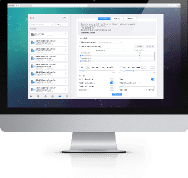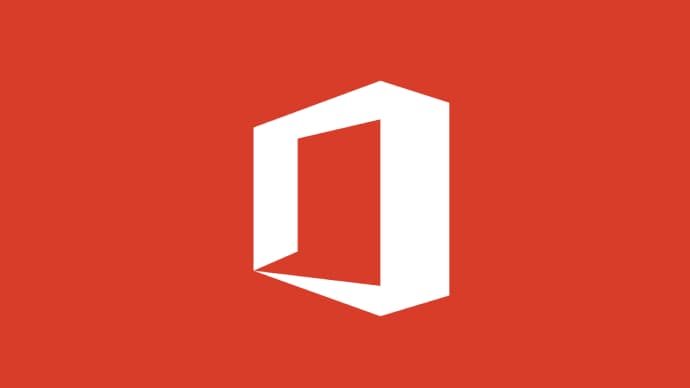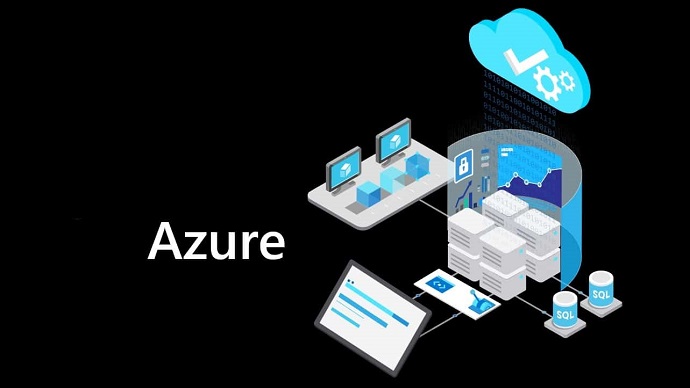Use VCE Exam Simulator to open VCE files

Certified Data Analyst Associate Databricks Practice Test Questions and Exam Dumps
Question No 1:
In the context of the medallion architecture used for organizing data workflows,
Which layer is most commonly accessed and utilized by data analysts when performing their reporting, analysis, and decision-making activities?
A. None of these layers are used by data analysts
B. Gold
C. All of these layers are used equally by data analysts
D. Silver
E. Bronze
Answer: B. Gold
Explanation:
In a medallion architecture — a structured method of managing and refining data through distinct stages — the Gold layer is the one most commonly used by data analysts. This architecture is typically divided into three progressive stages: Bronze, Silver, and Gold, each adding more structure, refinement, and reliability to the data.
The Bronze layer serves as the raw ingestion zone, where raw, unprocessed data is collected. This data often contains duplicates, errors, and inconsistencies, making it unsuitable for direct analysis. The Silver layer refines the Bronze data by applying cleansing, normalization, and enrichment processes. While Silver provides a much cleaner dataset, it still might require additional transformations depending on analytical needs.
The Gold layer, however, contains highly curated, aggregated, and business-ready datasets that are purpose-built for analytics, reporting, and decision-making. Data in the Gold layer is modeled to align with business logic and key performance indicators (KPIs), making it the ideal choice for data analysts. It offers easily accessible, trustworthy datasets that support efficient querying and deep insights without the need to understand complex raw data structures.
Contrary to the options suggesting all layers are equally used or none are used, data analysts generally prefer to operate on the Gold layer because it minimizes data preparation time and maximizes focus on deriving insights. Analysts can trust that Gold layer data is governed, structured, and aligned with enterprise-wide standards, enabling faster and more accurate analysis.
Thus, in practical, real-world scenarios where quick, reliable, and actionable insights are critical, the Gold layer stands out as the primary data source for most data analysts within the medallion architecture.
Question No 2:
A newly hired data analyst has joined a team that extensively uses Databricks SQL for data management and analytics tasks. Although the analyst has a strong background in SQL, they have no prior experience navigating the Databricks environment. The analyst needs to quickly find the appropriate area within Databricks SQL where they can compose, edit, and execute SQL queries against the organization’s datasets.
Which of the following pages within Databricks SQL should the analyst use to write and run SQL queries?
A. Data page
B. Dashboards page
C. Queries page
D. Alerts page
E. SQL Editor page
Correct Answer: E. SQL Editor page
Explanation:
When working in Databricks SQL, one of the primary goals for analysts is to write, modify, and execute SQL queries efficiently. Databricks provides a specialized interface known as the SQL Editor page specifically for this purpose. The SQL Editor is designed to offer a powerful and user-friendly environment where users can write complex SQL statements, preview query results, and easily troubleshoot syntax errors or performance issues.
The SQL Editor supports connecting to available data sources, selecting tables, and running queries against them without needing to leave the page. It includes features like syntax highlighting, auto-completion, and the ability to save or share queries, making it indispensable for daily data analysis tasks.
While the Data page helps users browse and explore databases and tables, it is not primarily meant for writing or executing queries. Similarly, the Dashboards page is used for visualizing query results in a presentation-friendly format rather than composing SQL. The Queries page stores previously created or saved queries but is not where you actively compose new ones. Lastly, the Alerts page is designed to set up automated monitoring and notifications based on specific query results, not to write queries interactively.
Therefore, the most appropriate and direct answer for where a new analyst should go to write and execute SQL queries is the SQL Editor page. Mastery of this page is crucial for efficiently leveraging Databricks SQL and tapping into its full capabilities for data exploration, reporting, and visualization.
Question No 3:
An organization has recently adopted Databricks SQL to enhance its data analysis capabilities. The data team is exploring how to best integrate Databricks SQL into their broader ecosystem of business intelligence (BI) tools, which currently includes platforms such as Tableau, Power BI, and Looker. They are seeking guidance on how Databricks SQL should be positioned relative to these traditional BI tools.
What is the most appropriate role of Databricks SQL when used alongside existing BI tools?
A. As an exact substitute with the same level of functionality
B. As a substitute with less functionality
C. As a complete replacement with additional functionality
D. As a complementary tool for professional-grade presentations
E. As a complementary tool for quick in-platform BI work
Correct Answer: E. As a complementary tool for quick in-platform BI work
Explanation:
Databricks SQL is designed primarily as a powerful tool for querying structured data directly within the Databricks environment. While it offers some visualization and dashboarding capabilities, it is not intended to serve as a full-fledged replacement for sophisticated business intelligence (BI) platforms like Tableau, Power BI, or Looker. These dedicated BI tools specialize in advanced data visualization, interactive dashboard design, report generation, and sharing insights across broader audiences.
Instead, Databricks SQL is best utilized as a complementary tool that supports quick, in-platform BI tasks. It allows data analysts, engineers, and scientists to rapidly explore, query, and visualize data without needing to export it to external tools. This makes it particularly useful for ad-hoc analyses, preliminary reporting, or iterative exploration during the data development process.
Professional BI tools, by contrast, offer deeper functionality for crafting polished, interactive, and large-scale reports intended for executive review, organizational dashboards, and customer-facing analytics. They often include advanced features like scheduled reporting, version control, integration with enterprise ecosystems, and fine-tuned user access control—areas where Databricks SQL does not aim to compete directly.
Thus, Databricks SQL enhances productivity by speeding up early data exploration and lightweight visualization while coexisting alongside full BI platforms for more elaborate and professional-grade reporting needs. Leveraging both together allows teams to be more agile, efficient, and responsive in their analytics workflows, ensuring that each tool is used where it excels the most.
In conclusion, Databricks SQL should be seen as a complementary tool focused on quick, convenient, in-platform BI work rather than a total replacement for traditional, feature-rich BI software.
Question No 4:
In the context of integrating Databricks with Fivetran for seamless data ingestion,
Which method provides the most efficient and automated connection setup between the two platforms?
Select the most appropriate option:
A. Utilize Workflows to configure a SQL warehouse (formerly referred to as a SQL endpoint) enabling Fivetran interaction
B. Deploy Delta Live Tables to create a cluster specifically for Fivetran interaction
C. Leverage Partner Connect's automated workflow to configure a cluster for Fivetran to interact with
D. Leverage Partner Connect's automated workflow to configure a SQL warehouse (formerly referred to as a SQL endpoint) for Fivetran to interact with
E. Utilize Workflows to configure a cluster for Fivetran to interact with
Correct Answer:
D. Leverage Partner Connect's automated workflow to configure a SQL warehouse (formerly referred to as a SQL endpoint) for Fivetran to interact with
Explanation:
When connecting Databricks to Fivetran for efficient data ingestion, the most streamlined and recommended approach is using Partner Connect’s automated workflow to establish a SQL warehouse (formerly known as a SQL endpoint). This method is specifically designed to simplify and accelerate integration between Databricks and its ecosystem of partners like Fivetran.
By leveraging Partner Connect, users can automate the provisioning of the necessary resources, reducing manual configurations and ensuring best practices are adhered to throughout the process. Partner Connect sets up a SQL warehouse — an optimized, scalable compute layer — that Fivetran can directly interact with, facilitating seamless data movement and transformation.
Other options like using Workflows or Delta Live Tables are more manual and not intended primarily for establishing ingestion points with external tools like Fivetran. Workflows are designed for orchestrating tasks within Databricks, and Delta Live Tables are primarily for managing pipelines within Databricks itself. Neither is tailored for creating a direct and secure integration environment for third-party data ingestion platforms.
Additionally, establishing a SQL warehouse instead of a cluster for Fivetran ensures better scalability, cost-efficiency, and performance tuning, especially under varying workloads that ingestion processes may demand. SQL warehouses in Databricks are also easier to manage, can autoscale according to query load, and integrate natively with BI and data integration tools, enhancing overall operational fluidity.
Thus, using Partner Connect to automatically create a SQL warehouse ensures that the setup is swift, reliable, and fully optimized for modern data ingestion practices involving Fivetran and Databricks.
Question No 5:
On the Databricks Lakehouse Platform, different data professionals interact with various services depending on their primary responsibilities. Databricks SQL is a key service used for querying, visualizing, and analyzing structured data. However, not all users make Databricks SQL their primary tool; some primarily rely on services like Databricks Machine Learning or Databricks Data Science and Engineering to perform their core tasks and only interact with Databricks SQL when necessary.Considering the nature of work for each role listed below,
Which professional most likely uses Databricks SQL as a secondary tool while primarily engaging with other specialized services?
Options:
A. Business Analyst
B. SQL Analyst
C. Data Engineer
D. Business Intelligence Analyst
E. Data Analyst
Data engineers play a critical role in building, managing, and optimizing data pipelines and ensuring that datasets are available for analytical and machine learning purposes. Their primary environment within the Databricks Lakehouse Platform is Databricks Data Science and Engineering, where they work with notebooks, code, ETL workflows, and distributed computing resources to prepare data for others. They focus heavily on backend tasks such as data ingestion, transformation, integration, and storage optimization.
While data engineers are capable of using Databricks SQL to run queries or verify data quality, it is typically not their main interface. Instead, they often use Databricks SQL as a secondary service when they need to validate transformations, perform ad-hoc analysis, or support business users by creating optimized queries or materialized views.
In contrast, roles like business analysts, SQL analysts, and business intelligence analysts rely on Databricks SQL as their primary workspace. Their daily tasks involve writing complex queries, creating dashboards, visualizing results, and interpreting insights directly through SQL-based interactions. Data analysts also primarily work within Databricks SQL to retrieve, analyze, and interpret data to inform business decisions.
Thus, data engineers use Databricks SQL only when necessary, typically in support of their broader tasks within Databricks Data Science and Engineering, making Option C the correct choice. Understanding the primary tools used by each role helps organizations better align user permissions and workspace organization within the Databricks environment, maximizing productivity and data governance across teams.
Question No 6:
A data analyst has scheduled a SQL query to execute every four hours on a SQL endpoint. However, they are encountering delays because the SQL endpoint requires a long time to start up each time the query runs. To address the slow startup issue while still keeping costs effectively managed,
Which of the following modifications should the analyst implement?
A. Reduce the SQL endpoint cluster size
B. Increase the SQL endpoint cluster size
C. Turn off the Auto Stop feature
D. Increase the minimum scaling value
E. Use a Serverless SQL endpoint
Answer: E. Use a Serverless SQL endpoint
Explanation:
In situations where a SQL endpoint takes too long to initialize before executing scheduled queries, the best solution to significantly reduce startup times while also maintaining reasonable costs is to switch to a Serverless SQL endpoint.
Traditional SQL endpoints often rely on pre-provisioned compute resources, meaning that when the endpoint is auto-stopped to save costs during idle periods, it needs to fully spin up again before handling any new queries. This spin-up process causes noticeable delays, particularly in infrequent batch operations like queries that run every few hours. Although adjustments like increasing cluster size or tweaking scaling parameters might help slightly, they do not eliminate the inherent cold-start problem.
Serverless SQL endpoints are specifically designed to solve this problem. In a serverless model, compute resources are automatically and instantly allocated when a query is triggered, without requiring manual cluster startup. This approach results in minimal to no startup lag and ensures that resources are only billed during active usage periods, offering a cost-effective alternative for workloads with sporadic query activity.
Choosing to reduce or increase the cluster size or adjust scaling values could impact performance but would not fundamentally solve the startup delay issue. Turning off Auto Stop could technically keep resources warm, but it would also incur unnecessary costs during idle periods.
Thus, transitioning to a Serverless SQL endpoint offers the most efficient balance between reducing latency and controlling operational expenses, making it the ideal solution for this scenario.
Question No 7:
A data engineering team has successfully implemented a Structured Streaming pipeline within their Databricks environment. This pipeline ingests incoming data, processes it in efficient micro-batches, and subsequently populates gold-level tables intended for high-quality business reporting. The micro-batches are triggered at regular intervals, precisely every minute.
A data analyst has developed a dashboard that relies on querying these gold-level tables. Project stakeholders have now requested that the dashboard refresh and display newly available data within one minute of its arrival in the gold-level tables.
Before proceeding to configure the dashboard to meet this rapid refresh demand, which important cautionary point should the data analyst communicate to the stakeholders?
A. The required compute resources could be costly
B. The gold-level tables are not appropriately clean for business reporting
C. The streaming data is not an appropriate data source for a dashboard
D. The streaming cluster is not fault tolerant
E. The dashboard cannot be refreshed that quickly
Correct Answer: A. The required compute resources could be costly
Explanation:
While it is technically possible to configure a dashboard to refresh every minute to reflect near real-time data updates from gold-level tables, there are significant considerations regarding cost and resource consumption. In particular, enabling such frequent refreshes means the system must consistently allocate sufficient compute resources to query the updated tables and render new dashboard views almost continuously.
This high-frequency querying places considerable pressure on compute clusters, leading to much higher resource utilization. If clusters must remain active and performant at all times to support near-real-time responsiveness, the associated operational costs can escalate dramatically. This is especially true in cloud environments like Databricks, where compute usage is directly tied to pricing.
In this situation, the most responsible course of action for the data analyst is to caution stakeholders that although refreshing the dashboard every minute is achievable, it may result in substantially increased costs. It would be prudent to weigh whether the need for minute-by-minute freshness truly outweighs the added financial and infrastructure burden.
Options like data cleanliness (B) and cluster fault tolerance (D) are important but are not the immediate concern regarding frequent dashboard updates. Additionally, gold-level tables, by their definition, are typically curated for business reporting, making option (B) less relevant. Streaming data (C) can indeed feed dashboards if structured properly, and dashboards (E) can technically refresh quickly depending on platform capabilities, leaving cost concerns (A) as the primary warning.
Thus, the most accurate caution to share is that the required compute resources could be costly.
Question No 8:
A data engineering team is tasked with setting up a process to ingest large volumes of data stored in cloud-based object storage, such as AWS S3, Azure Data Lake, or Google Cloud Storage, into their analytics environment. They want to make the ingestion process efficient by creating external tables that reference the data directly, rather than copying it into the system. To achieve this, they need to correctly configure their external table creation statement.
Which of the following approaches is the correct method for ingesting data directly from cloud-based object storage into the system?
A. Create an external table while specifying the DBFS storage path to FROM
B. Create an external table while specifying the DBFS storage path to PATH
C. It is not possible to directly ingest data from cloud-based object storage
D. Create an external table while specifying the object storage path to FROM
E. Create an external table while specifying the object storage path to LOCATION
Correct Answer: E. Create an external table while specifying the object storage path to LOCATION
Explanation:
When ingesting data from cloud-based object storage directly into a data analytics system like Databricks or similar platforms, the recommended approach is to create an external table that references the data using the LOCATION keyword. This method enables the table to point directly to the files stored in the object storage (such as Amazon S3, Azure Blob Storage, or Google Cloud Storage) without moving or duplicating the data into the internal storage system.
Using LOCATION ensures that the external table understands where the raw files reside, allowing queries to read the data dynamically from the original source. This preserves storage efficiency, reduces ingestion time, and provides seamless access to frequently updated datasets.
In contrast, DBFS (Databricks File System) paths reference internal storage within Databricks rather than external cloud object storage directly. Options A and B, mentioning DBFS paths, are incorrect in the context of directly using cloud storage. Option C is false because modern data platforms absolutely support direct ingestion from cloud object storage. Option D, which suggests using FROM with an object storage path, is syntactically wrong—FROM is used to reference tables, not file locations.
Therefore, the correct syntax involves defining an external table and specifying the cloud storage path using the LOCATION clause. This method fully leverages the elasticity and scalability of cloud storage while maintaining optimal performance for large-scale data processing.
In summary, the correct method for directly ingesting data from cloud object storage is to create an external table and specify the object storage path using the LOCATION keyword, making answer E the correct choice.
Question No 9:
A data analyst is designing a unified dashboard to visually organize three distinct operational environments: Development, Testing, and Production. Their objective is to ensure that all three sections appear within a single dashboard, but they want to clearly label and differentiate each section using text labels.
Which tool or feature should the data analyst utilize to effectively insert and format textual designations for these three sections within the dashboard?
A. Create separate endpoints for each section
B. Develop separate queries for each section
C. Insert markdown-based text boxes for section headings
D. Directly type text into the dashboard while in editing mode
E. Apply separate color palettes for each section
Correct Answer: C. Insert markdown-based text boxes for section headings
Explanation:
When a data analyst needs to structure a dashboard into distinct sections like Development, Testing, and Production, the most effective solution is to use markdown-based text boxes. Markdown provides a lightweight, flexible way to insert formatted text into a dashboard, allowing for headers, bullet points, line breaks, and other visual cues that clearly distinguish between sections.
By leveraging markdown-based text boxes, analysts can create visible headings or separators without having to modify underlying queries, color schemes, or endpoints. Markdown supports structured formatting like bold, italic, headings, and even horizontal lines, enabling the dashboard to remain both organized and visually intuitive for viewers.
Options like creating separate endpoints or queries (A and B) would unnecessarily complicate the dashboard architecture and are not primarily designed for labeling or sectioning purposes. While typing text directly into the dashboard (D) in edit mode could allow some annotation, markdown offers far richer formatting capabilities, providing a much more professional and organized presentation. Finally, while applying different color palettes (E) could help visually differentiate sections, it would not offer the explicit labeling needed to meet the analyst’s stated goal of using clear text to designate each section.
Overall, using markdown-based text boxes ensures that the dashboard remains clean, organized, and easy to understand for any stakeholder or team member interacting with it, promoting both clarity and aesthetic coherence.
Question No 10:
A data analyst is tasked with efficiently building SQL queries and generating data visualizations using the Databricks Lakehouse Platform. A key requirement is that the compute resources must be capable of operating in a serverless manner to minimize management overhead. Additionally, the created visualizations must be easily integrated into dashboards for presentation and monitoring purposes. Given these specifications,
Which of the following Databricks Lakehouse Platform services or capabilities would best satisfy all of the analyst’s requirements?
A. Delta Lake
B. Databricks Notebooks
C. Tableau
D. Databricks Machine Learning
E. Databricks SQL
Answer: E. Databricks SQL
Explanation:
The best solution for a data analyst needing to quickly create SQL queries, build visualizations, and use serverless compute within the Databricks Lakehouse Platform is Databricks SQL.
Databricks SQL is specifically designed to provide a seamless experience for data analysts who work primarily with structured data. It enables users to perform SQL-based querying directly against data stored in the Lakehouse, and it supports serverless compute, allowing for instant scaling and optimized resource management without the need for manual cluster handling. This serverless capability drastically simplifies operations and improves efficiency, especially when query workloads are unpredictable or when fast startup times are critical.
Moreover, Databricks SQL offers powerful built-in tools for creating visualizations such as bar charts, pie charts, and scatter plots directly from query results. These visualizations can then be easily compiled into dashboards, enabling teams to monitor metrics, spot trends, and share insights across an organization in real time.
Other options listed do not meet all the stated requirements. Delta Lake focuses on data storage and versioning, not querying or visualization. Databricks Notebooks are great for collaborative data science work but are not optimized for serverless SQL querying. Tableau is a third-party visualization tool that would require additional integration efforts. Databricks Machine Learning focuses on model building and machine learning workflows, not SQL querying or dashboard creation.
Therefore, Databricks SQL is the only platform service that comprehensively addresses all of the analyst’s needs: rapid SQL development, seamless visualization building, serverless operation, and dashboard integration.
Related Exams

Top Training Courses











SPECIAL OFFER: GET 10% OFF
This is ONE TIME OFFER

A confirmation link will be sent to this email address to verify your login. *We value your privacy. We will not rent or sell your email address.
Download Free Demo of VCE Exam Simulator
Experience Avanset VCE Exam Simulator for yourself.
Simply submit your e-mail address below to get started with our interactive software demo of your free trial.